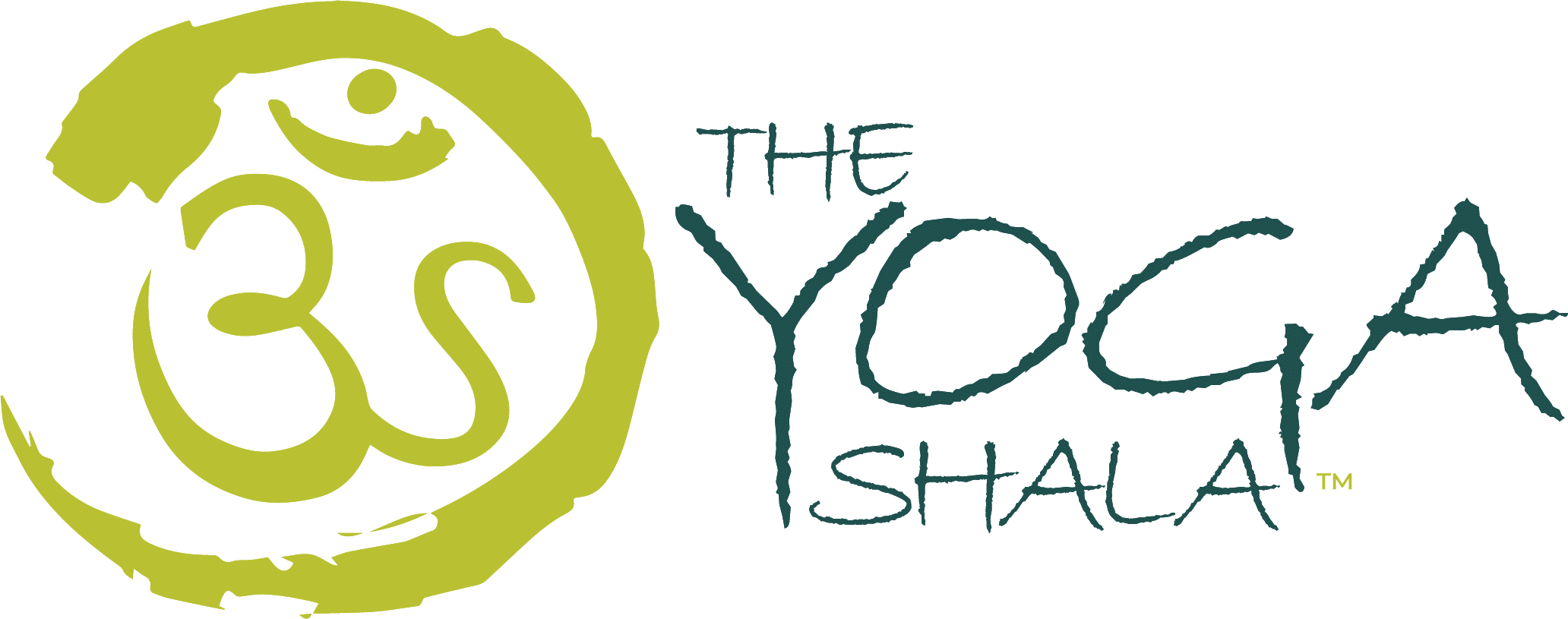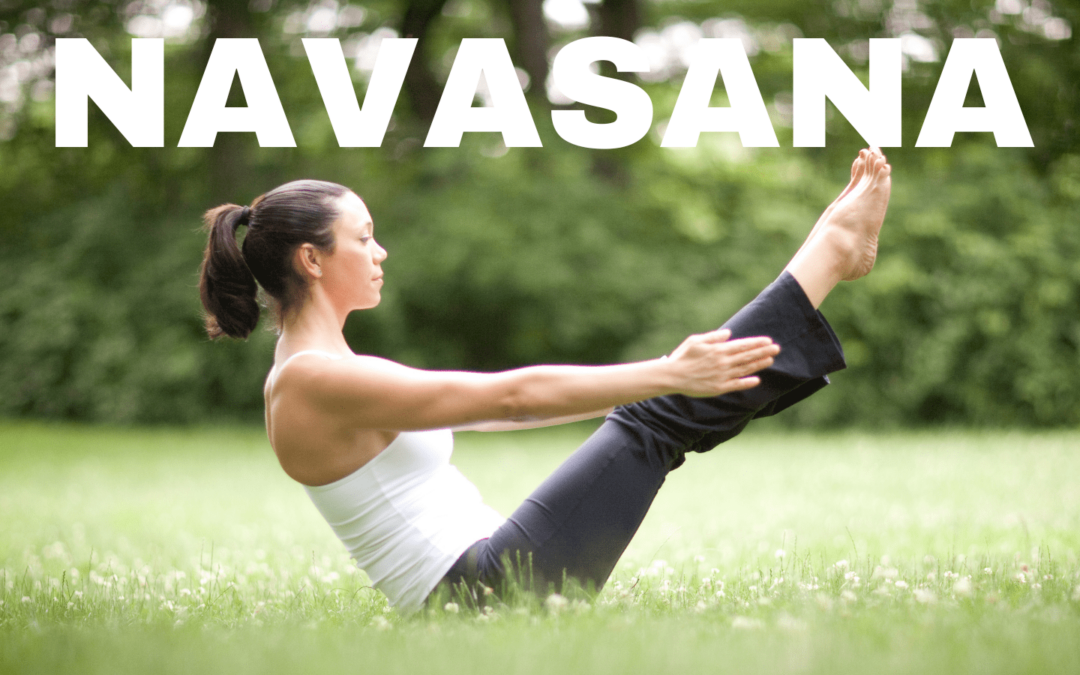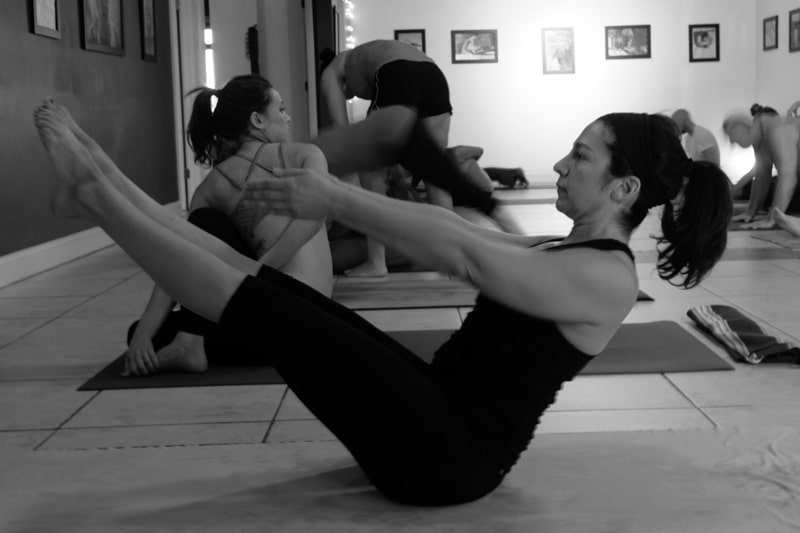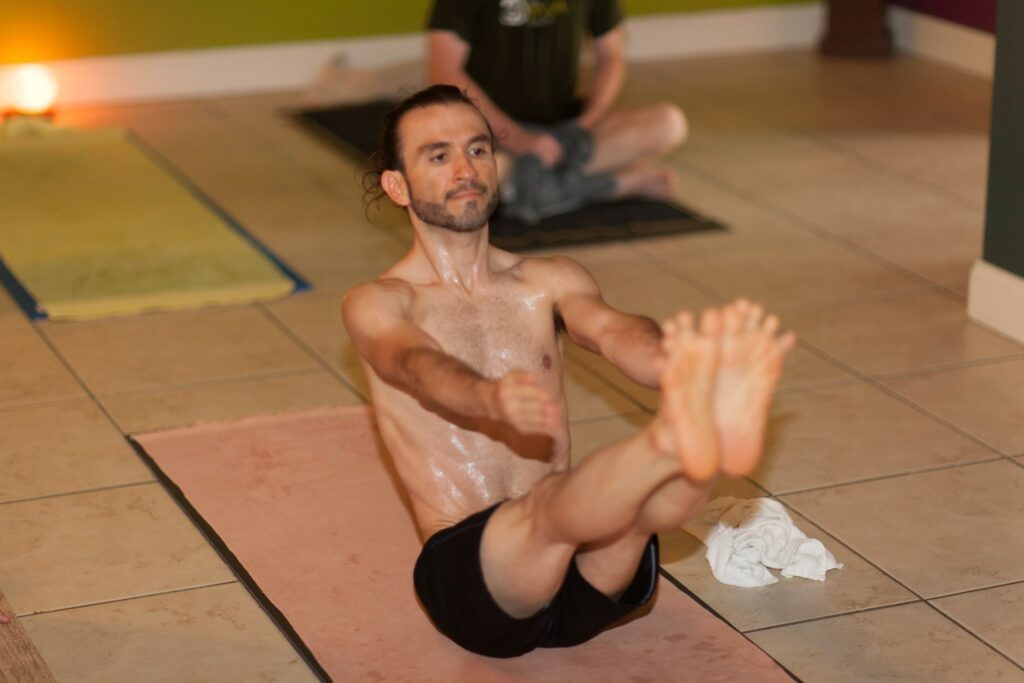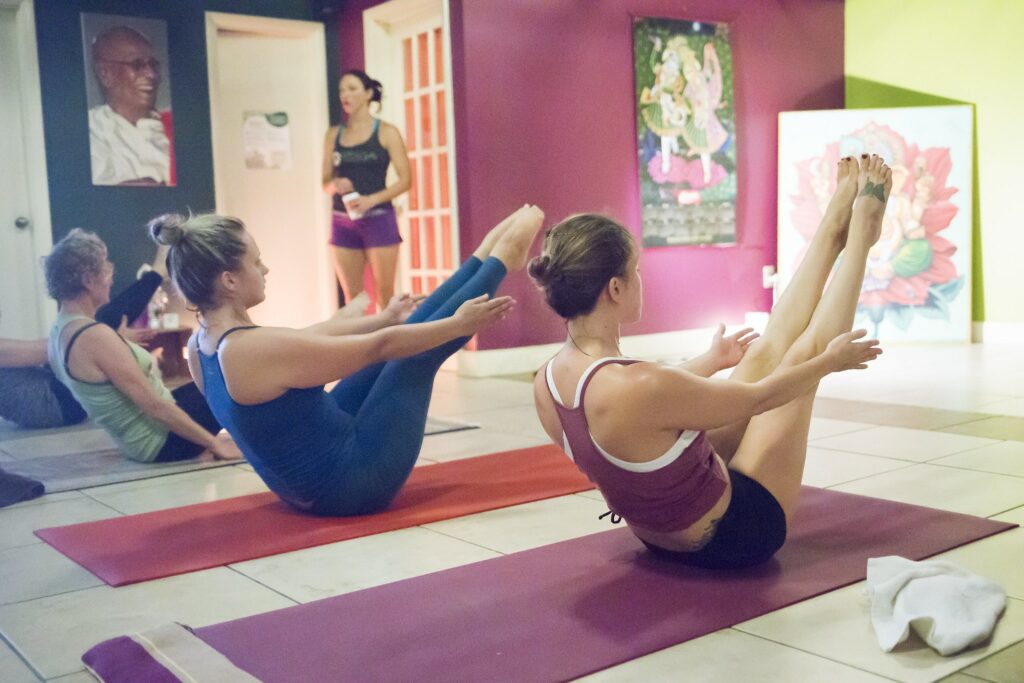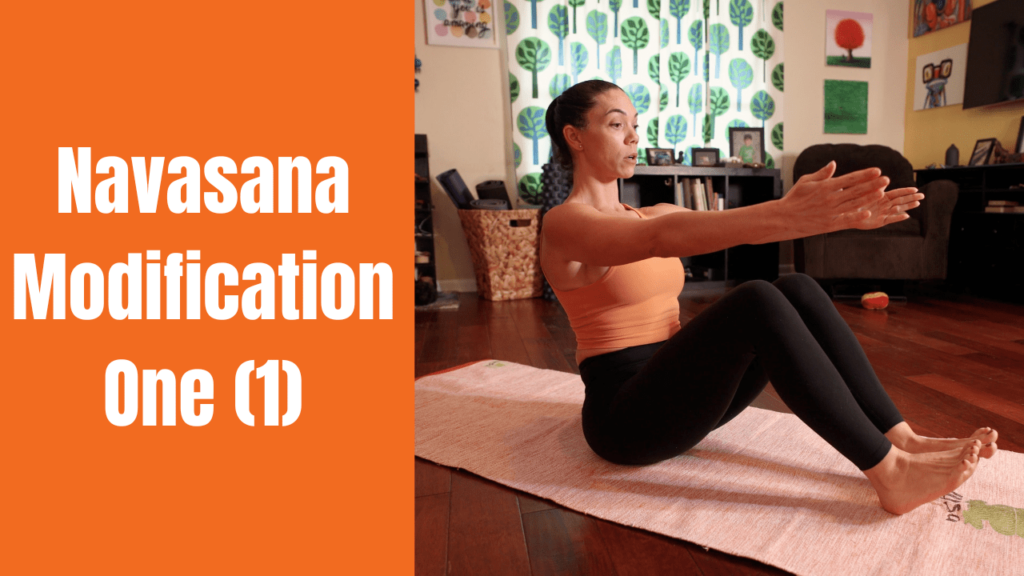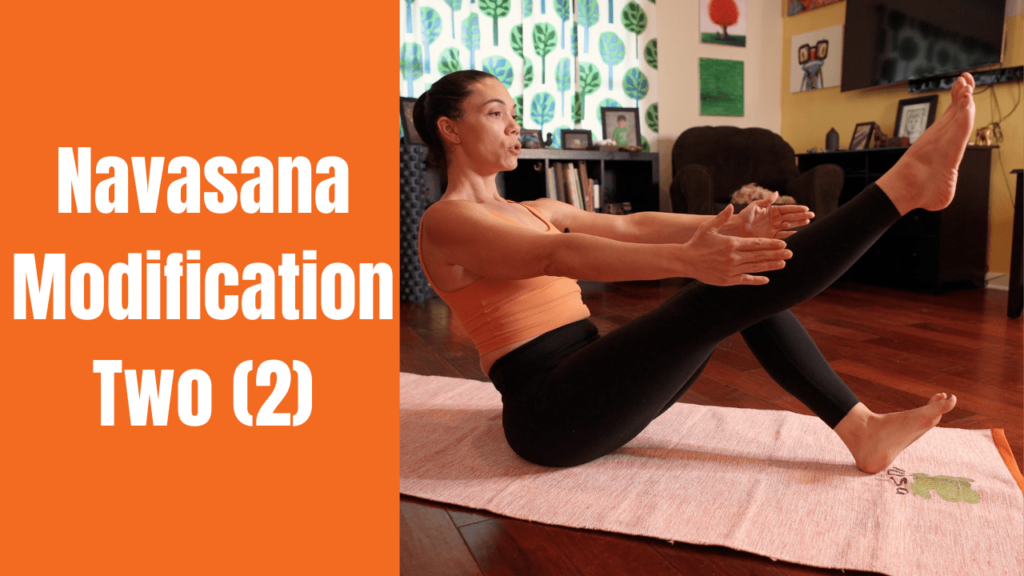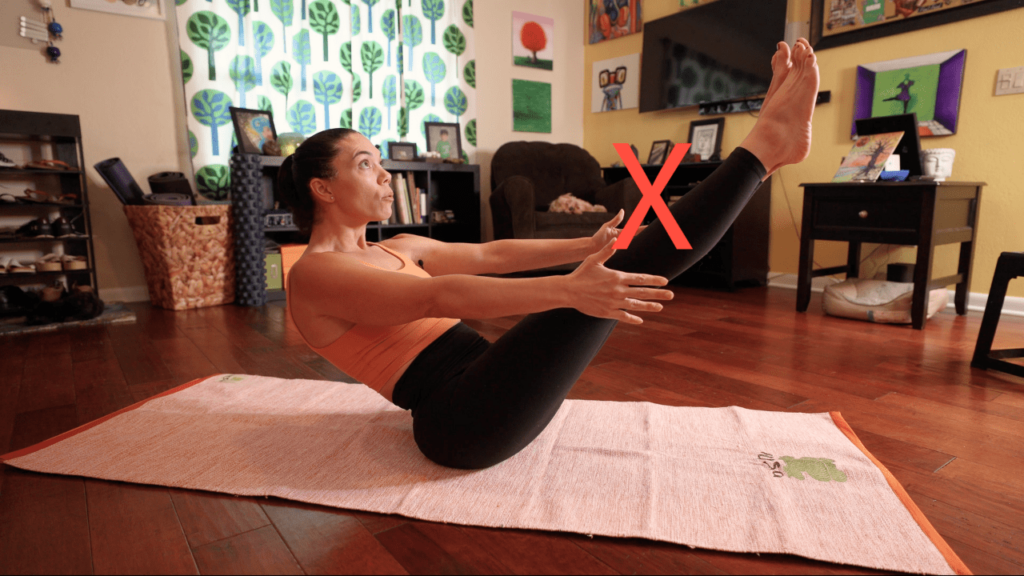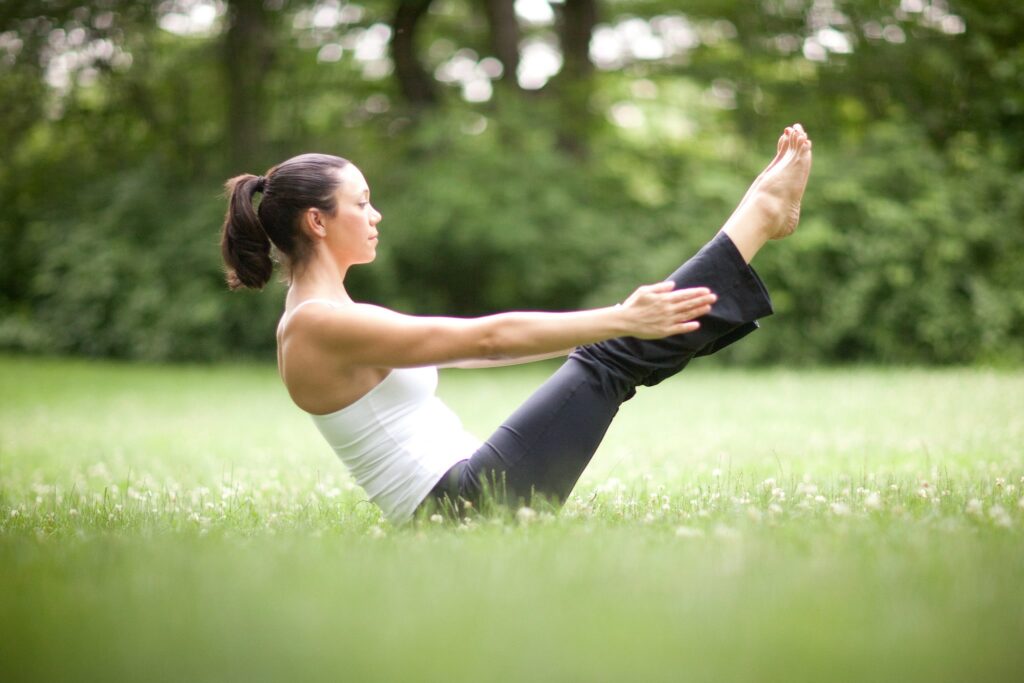Yoga has long been celebrated for its multifaceted benefits for the mind, body, and spirit. Ashtanga Yoga, a dynamic and rigorous form of yoga, is known for its structured sequences that gradually build strength, flexibility, and mindfulness. In the primary series of Ashtanga Yoga, a multitude of poses challenge practitioners to connect with their bodies and minds in unique ways. One such pose is Navasana, commonly known as the Boat Pose. Let’s delve into the nuances of Navasana and understand its significance within the Ashtanga Yoga practice.
The Essence of Navasana
Navasana derives its name from the Sanskrit words “nava,” meaning boat, and “asana,” meaning posture. This pose mimics the shape of a boat, with the body balanced on the sit bones, legs lifted, and the spine forming a “V” shape. This seemingly simple pose demands engagement and activation of various muscle groups, requiring a blend of core strength, balance, and stability.
Navasana is the thirteenth seated posture in the Ashtanga Yoga Primary series. This posture tends to be a challenging posture, regardless of how strong or flexible you are. Even if the first Navasana seems rather easy for you, with legs fully extended and back straight, by the fifth one, many practitioners find it challenging to maintain a straight back and breathe freely. If you find the full expression of Navasana challenging, be sure to check out our recommendations for modifying this posture.
Benefits of Navasana
Physical Benefits:
Core Strengthening:
Navasana is a powerhouse for building core strength. It engages the entire abdominal region, including the rectus abdominis, transverse abdominis, and obliques. A strong core supports better posture, spine health, and overall stability.
Hip Flexor Flexibility:
As you lift your legs in Navasana, the hip flexors are stretched and engaged. Regular practice can lead to increased flexibility in the hip joints, promoting better mobility and reduced tension in the lower back.
Improved Digestion:
The compression of the abdominal area in Navasana massages and stimulates the digestive organs. This can aid in digestion, alleviate constipation, and promote better gut health.
Spinal Health:
The pose encourages a straight spine, which helps in maintaining a healthy posture and reducing the risk of spinal issues. The engagement of core muscles also contributes to spinal stability.
Stronger Back Muscles:
While the pose predominantly focuses on the front body, the muscles of the lower back are also engaged to support the lift of the legs. This balanced engagement promotes overall spinal strength.
Mental and Emotional Benefits:
Enhanced Concentration:
Balancing in Navasana requires focused attention and mindfulness. Practicing this pose helps sharpen your concentration skills and teaches you to remain present in the moment.
Stress Relief:
The deep breathing combined with the physical effort in Navasana triggers the release of endorphins—natural stress relievers. This can help alleviate tension and promote a sense of calm.
Confidence Boost:
As you gradually improve your strength and balance in Navasana, you’ll experience a boost in self-confidence. Achieving even small milestones in the pose can empower you both on and off the mat.
Mind-Body Connection:
Navasana demands synchronization between breath, movement, and mental focus. This strengthens the mind-body connection, allowing you to become more attuned to your body’s signals and needs.
Energetic Benefits:
Manipura Chakra Activation:
In yoga philosophy, Navasana stimulates the Manipura chakra, which is associated with personal power, confidence, and transformation. Activating this chakra can foster a sense of empowerment and self-assuredness.
Prana Flow:
The posture encourages the flow of prana (life force energy) along the spine. This revitalizing energy flow can leave you feeling invigorated and balanced.
Contraindications
Pregnancy:
Navasana involves significant engagement of the abdominal muscles, which can put pressure on the abdominal area and the pelvic floor. The full expression of this posture is NOT recommended if you are pregnant. Some women will find they can easily still do this asana while pregnant, but it puts too much pressure on your abdominal wall and therefore is better done in a modification form during pregnancy, or avoided altogether.
Diastasis Recti:
This condition occurs when the abdominal muscles separate, often due to pregnancy or rapid weight changes. Navasana can exacerbate this condition and should be avoided until the separation has healed and abdominal strength is restored.
Recent Abdominal Surgery:
If you’ve undergone abdominal surgery, such as hernia repair or any surgery involving the core muscles, consult with your healthcare provider or a qualified yoga instructor before attempting Navasana.
Back Injuries:
Individuals with chronic or acute back issues, such as herniated discs, should approach Navasana with caution. The pose involves a balancing action that could strain the lower back if not executed correctly. Consider modifying or avoiding the pose if you have any discomfort or pain.
Neck Issues:
If you have neck injuries, cervical spine problems, or experience neck pain, be cautious in Navasana. Avoid rounding the upper back excessively, as this can strain the neck and exacerbate any existing issues.
High Blood Pressure:
Navasana requires a strong engagement of the core muscles and can cause a rise in blood pressure. If you have uncontrolled high blood pressure or any heart-related issues, consult your healthcare provider before attempting this pose.
Wrist or Shoulder Injuries:
Placing the hands on the floor behind the hips in Navasana can put pressure on the wrists and shoulders. If you have wrist or shoulder injuries or discomfort, consider modifications, or avoid the pose altogether.
Recent Surgeries or Injuries:
If you’ve had recent surgeries or injuries that affect your ability to balance or engage the core muscles, Navasana may not be suitable until you’ve fully recovered and regained strength.
Lack of Core Strength:
If you’re new to yoga or have a weak core, attempting Navasana prematurely can strain the muscles and potentially lead to injury. Work on building core strength through gentler poses before progressing to more advanced poses like Navasana.
Always prioritize your safety and well-being when practicing yoga. If you’re uncertain about whether Navasana is appropriate for you, consult a qualified yoga instructor or healthcare professional. They can offer guidance and modifications tailored to your individual needs and limitations. Remember that yoga is about honoring and respecting your body’s signals, and there’s no shame in opting for alternatives that better suit your unique circumstances.
Tap here to watch a step-by-step tutorial video on Navasana
Step-by-Step Instructions for the Full Expression of Navasana with Sanskrit Vinyasa Count
We will be entering this posture from downward facing dog, having just taken a vinyasa after Marichyasana D.
Sapta (Vinyasa #7): From Adho Mukha Svanasana (down dog), look forward and walk or jump your feet through. Lean back slightly and extend your legs up and out in front of you, off the floor. Take your arms out in front of you, hip width apart.
Open your chest and draw your belly in. Work to keep your toes pointed and your legs straight. Work to have your toes in line with your eye level. Continue to lengthen your back, lift your chest and gaze towards your toes (Padhayoragrai Drishti). Take five deep breaths here.
Asthau (Vinyasa #8) Inhale, cross your legs, bring your hands to the floor and push your body off the floor. Exhale back down to the ground.
Sapta (Vinyasa #7) Begin your second (2nd) of five Navasana’s. Extend your arms in front of you in line with your eyes. Lean back slightly and lift your feet off the floor. Your legs are straight legs and your chest is lifted. Gaze towards your toes (Padhayoragrai Drishti). Take five deep breaths here.
Asthau (Vinyasa #8) Inhale, cross your legs, bring your hands to the floor and push your body off the floor. Keep your head and chin up as you do so. Exhale back down to the ground.
Sapta (Vinyasa #7) Begin your third (3rd) of five Navasana’s. Extend your arms in front of you in line with your eyes. Lean back slightly and lift your feet off the floor. Your legs are straight legs and your chest is lifted. Gaze towards your toes (Padhayoragrai Drishti). Take five deep breaths here.
Asthau (Vinyasa #8) Inhale, cross your legs, bring your hands to the floor and push your body off the floor. Keep your head and chin up as you do so. Exhale back down to the ground.
Sapta (Vinyasa #7) Begin your fourth (4th) of five Navasana’s. Extend your arms in front of you in line with your eyes. Lean back slightly and lift your feet off the floor. Your legs are straight legs and your chest is lifted. Gaze towards your toes (Padhayoragrai Drishti). Take five deep breaths here.
Asthau (Vinyasa #8) Inhale, cross your legs, bring your hands to the floor and push your body off the floor. Keep your head and chin up as you do so. Exhale back down to the ground.
Sapta (Vinyasa #7) Begin your fifth (5th) and final Navasana. Extend your arms in front of you in line with your eyes. Lean back slightly and lift your feet off the floor. Your legs are straight legs and your chest is lifted. Gaze towards your toes (Padhayoragrai Drishti). Take five deep breaths here.
Nava (Vinyasa #9) After your fifth breath in your last Navasana position, cross your legs, bring your hands to the ground and jump back into Chaturanga Dandasana.
Dasa (Vinyasa #10) Inhale into Urdhva Mukha Svanasana(Upward facing dog)
Ekadasa (Vinyasa #11) Exhale into Adho Mukha Svanasana (Downward facing dog)
Tap above or click here to watch our full step-by-step tutorial video of Navasana
Navasana Modifications
For practitioners who are building their strength or working with limitations, there are several wonderful modifications available for you to safely work your way towards the full expression of Navasana.
Variation One (1)
Start in downward facing dog. Walk or jump through to seated position. From there, bend your knees and extend your arms out in front of you (hip distance apart). Lean back slightly ensuring you maintain a straight back. Your head is up. Breathe here for five deep breaths. Engage mula bandha with every inhale and uddiyana bandha with every exhale.
After your fifth exhale, bring your hands to the ground, cross your legs, inhale and press through your hands and try to lift your hips off the floor keeping your feet on the mat. Exhale, lower back down. Make sure you keep your head up and eyes forward while you lift your hips off the floor.
Then start with Navasana #2 with arms extended, knees bent, head and eyes lifted. Make sure you are slightly leaning back to maintain a straight spine. Breathe here for five deep breaths. On your last exhale, cross your legs and repeat the lift. Repeat Navasana and the lift three more times (for a total of five Navasana). After your fifth breath in your fifth and final Navasana, take your Vinyasa.
Variation Two (2)
Start from downward facing dog. Jump, hop or walk through to seated position. Extend your arms in front of you (hands are hip distance apart). Bend your knees and lean back slightly to ensure your back is straight. Lift your chin and head up. Lift one of your legs in the air and stretch it up and out.
Breathe here for five deep breaths. Maintain engagement of mula bandha with every inhale and uddiyana bandha with every exhale. After your fifth exhale, bring your hands to the floor midway between your knees and hips. Keep your head up and eyes forward. Inhale and press through your hands and try to lift your hips and feet. Exhale, lower back down. We will do this 5x.
Inhale and begin Navasana #2. Bend. Your knees, extend your arms, and lift your chest as you lean back. Lift your other leg off the floor and extend it forward. Do your best to keep your chest lifted and your back flat. Breathe here for five deep breaths. At the end of your fifth exhale, cross your legs and repeat the lift. Repeat Navasana and the lift three more times total.
Be sure to alternate the extended leg each time. On the fifth and final Navasana, you may try to attempt the full expression with both legs straight. However, if you are fatigued, do your last Navasana with both feet on the floor and knees bent (Modification 1). Once you take your fifth breathe here in your fifth Navasana, take your Vinyasa.
As this modification becomes easier, you may begin doing Navasana with both legs lifted and both knees bent. And once that modification becomes easier, you can begin attempting the full expression of Boat Posture.
Common Mistakes
Do NOT compromise your body position in Boat pose to get your legs straight. It is WAY more important for your back to be straight in Navasana than for your legs to be straight. Whenever you find your back starting to round as you get fatigued, take a modification of the posture that will help you safely keep your chest lifted and back flat.
It is most important to focus on keeping your back straight. Keeping one leg on the floor or bending both knees are extremely useful modifications. Both allow the spine and pelvis to stay open and long, while you work to strengthen your hips and core.
Precautions and Considerations
While Navasana offers numerous benefits, it’s important to practice with awareness and respect for your body’s limitations. If you’re new to yoga or have any existing injuries or conditions, consider these precautions:
Modify as Needed: If you’re struggling with the full expression of Navasana, feel free to use your hands for support behind your thighs or keep your feet on the ground.
Avoid Straining: Don’t force your legs higher than your hip flexors allow. Overstraining can lead to discomfort or injury.
Listen to Your Body: If you experience pain, discomfort, or strain while practicing Navasana, release the pose and consult a yoga instructor or healthcare professional.
Navasana, the Boat Pose, is a cornerstone of the Ashtanga Yoga primary series. Through its physical challenges and mental subtleties, Navasana embodies the essence of yoga—union of body, mind, and spirit. As you practice Navasana and explore its depths, remember that yoga is a journey, not a destination. Each attempt, each moment of presence, contributes to your growth on and off the mat.
Practice with The Yoga Shala
If you want to join us for LIVE classes, The Yoga Shala offers virtual and in person classes every weekday morning. We are located at 140 Circle Drive, #4, Maitland, Florida. Owner, Krista Shirley, also offers virtual or in person private sessions (Yoga, Meditation, Breath-work, Nutrition, Life Coaching and Mentorship). Visit theyogashala.com for details.
Be sure to signup for our newsletter to stay on top of local events and classes, Nysa products sales, new offerings, new products and more!
We hope you find this video series helpful to you in creating or maintaining your yoga practice!
About Krista
Krista Shirley is a level II authorized Ashtanga Yoga teacher. She is deeply passionate about sharing these teachings with all who wish to learn.
If you want to join Krista in person she teaches daily classes at The Yoga Shala in Maitland, Florida. She also offers virtual sessions in Yoga, Meditation, Breath-work, Nutrition, Life Coaching and Mentorship. Check out www.theyogashala.com for more details.
If you do not live in Central Florida and want to find an authorized teacher in your area, check out our teacher, Sharath Jois’ website, for a list of all teachers authorized and certified by his yoga centre in India.
|
|
|
|
|
|
|
|
|
|
|
|
❤️SHOP MERCHANDISE: Nysa Products
❤️LET’S BE SOCIAL:
Instagram: Krista Shirley Yoga
Instagram: The Yoga Shala
Facebook: The Yoga Shala
Facebook: KristaShirleyYoga
For other inquires please contact: [email protected]
